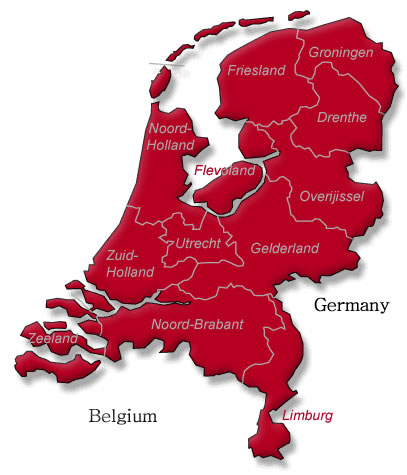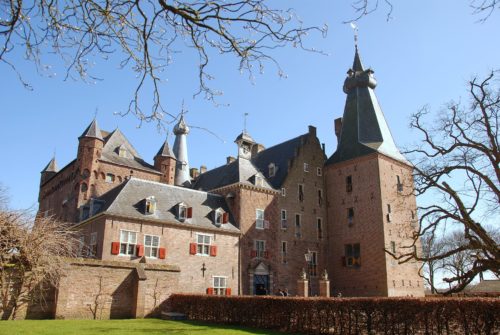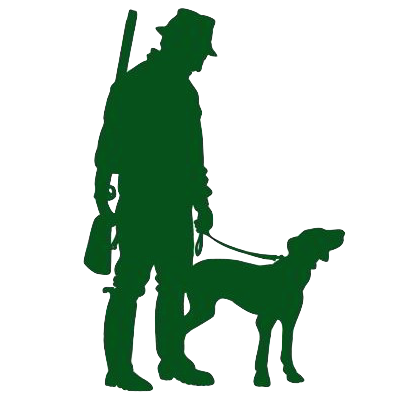
Hunting (Shooting) in the Netherlands
Area: 41,526 km²
Population: 16.4 million
Density: 456 per km²
Use of surface:
Agricultural use: 23,833 km²
Forest: 3,041 km²
Natural Area: 1,438 km²
Constructed area: 3,197 km²
Other terrain: 2,398 km²
Water water: 5,952 km²
Hunting legislation
In the Netherlands, a lot has changed for hunters in 2002. Since 1 April 2002 we have had the Flora and Fauna Act, and since 2012 the Nature Conservation Act and since 1 January 2024 the Environment and Planning Act, in which we only know 5 game species. Wildlife Management Units and Plans and Wildlife Management Units. It also regulates the prevention and control of damage, nuisance control and population management of animal species.
Game species:
Hunting in the Netherlands refers to the hunting of the five game species. A hunter is legally authorized, in derogation from the prohibited protection regimes, to hunt the five game species in the hunting season determined for this purpose, which is determined by the national government. There are no regional differences in open seasons. In general, night hunting is prohibited and only allowed with a provincial environmental permit. Shooting is not allowed on Sundays, New Year’s Day, Easter, Whit Monday, Christmas Day, Boxing Day and Ascension Day. In addition, there are restrictions on hunting under adverse weather and other conditions.
- Woodpigeon: October 15 – January 31
- Mallard: August 15 – January 31
- Pheasant: rooster – October 15 – January 31
- Fazant: hen – October 15 – December 31
- Rabbit: August 15 – January 31 *[1]
- Hare: October 15 – December 31 *[2]
[1] See also the nationally exempted animal species for damage control
[2] Temporarily closed in the provinces of Limburg, Groningen and Utrecht
The keeper of a particular hunting field is legally obliged to be affiliated with a wildlife management unit and is also legally responsible for maintaining or obtaining a reasonable wildlife population of these game species within his hunting field. He is also responsible for preventing damage to, for example, agricultural crops. The owner of a hunting field will therefore always have to keep an eye on these two things when exercising the hunt. In the case of a reasonable population of game in a hunting field, the level of the game population is such that it contributes to the prevention of damage without affecting the conservation status of the species.
The current Environment and Planning Act makes a clear distinction between hunting of game species on the basis of a hunting lease agreement and population management and damage and nuisance control for the other animal species on the basis of the consent of the land user.
Damage control.
The land user may be exempted from the prohibition in Article 5.1, paragraph 2 of the Environment and Planning Act, to carry out an act without an environmental permit that has been designated as a flora and fauna activity subject to a permit in a ministerial regulation (Decree on Activities in the Living Environment (BAL). The exemption may be granted for the purpose of the land user controlling harmful animals on his land and in or on his buildings. Damage control by land users is appropriate when preventive measures do not provide sufficient relief and is also important when hunting is not possible, for example in the case of bird species that are not permitted by the Birds Directive or if it is necessary to control them outside the hunting seasons. The exemption takes the form of a derogation from the designation of certain activities as flora and fauna activities subject to an environmental permit, by ministerial regulation or by environmental ordinance of the province on the basis of Article 5.2 of the Environment and Planning Act; Damage control is designated as a permit-free case.
National Exemption species by ministerial regulation
This exemption can only be granted for year-round control of (imminent) damage caused by
- The Canada Goose,
- The woodpigeon,
- The jackdaw
- The rabbit,
- The fox and
- The Black Crow.
These are species that are not threatened in their survival and that cause damage throughout the country and that require a nationally uniform approach. The exemption by environmental ordinance can be granted if it concerns animals of species other than the six national harmful species mentioned above and if animals of these species cause damage in the province concerned.
In the context of management and damage and nuisance control, other animal species may also be hunted (after explicit permission from the government or province). Again, these must be species that are not threatened with extinction. The BAL sets out frameworks for these ministerial and provincial exemptions, which ensure that the exemptions are granted in accordance with the requirements of the Birds and Habitats Directives.
This is largely arranged per province based on the Fauna Management Plan approved by the province. The game species and some of the other animal species are also laid down by the central government in a ministerial regulation or in a provincial environmental ordinance. Below is a brief overview showing when which animal species may be hunted.
Exemptions/provincial environmental ordinances such as:
- Greylag goose, white-fronted goose and barnacle goose: year-round with a trough in the breeding period (roughly March – end of June) and a trough in a number of provinces in the winter period
- Roe deer: varies per province, but in general the bucks are hunted in the summer (from 1 May to September) and the goats in the winter (from January to mid-March)
- Fallow deer: 1 August to 15 February
- Wild boar: 1 July to 28 February (outside the Veluwe and Meinweg all year round)
- Edelhert: 1 augustus t/m 15 februar
The hunting rights belong to the landowner. He may transfer all or part of these rights by means of tenancy.
As far as territorial waters and public land are concerned, the usufruct of the hunt also belongs to the owner (Ministry of Finance or Ministry of Agriculture, Nature Management and Fisheries) who can lease these rights.
A hunting license is required for hunting. The license must be renewed annually. Approximately 30,000 permits are issued annually.
This authorization shall be granted if the applicant:
- Is at least 18 years old,
- Has an insurance voucher (which covers the third-party risk for at least € 1,000,000)
- Has passed an approved hunting exam (approved are the exams of the Netherlands, Germany, Austria, Belgium and Luxembourg. Also approved is the theoretical part of Denmark’s exam.
Hunters who possess the latter are required to pass a practical examination in the Netherlands) can prove that he can hunt in a certain area.
Hunting areas must consist of an adjacent area of at least 40 hectares, have a width of at least 300 metres and in this area, it must be possible to describe a circle with a radius of at least 150 metres.
All nets, traps, etc. are prohibited. With a permit for pest species, some form of live capture is permitted. Registered duck decoys are allowed to catch certain duck species during the open season.
It is not allowed to own a weapon without a license. In the Netherlands, the gun license is included in the hunting license. It is forbidden to use air rifles for hunting.
Hunters from abroad can obtain a Dutch hunting license under the same conditions as Dutch hunters, i.e. they must have passed an approved hunting exam. Visitors at the personal invitation of a Dutch hunter can also obtain a special permit for six consecutive days. They can only use this permit if accompanied by a resident hunter with a normal license.
Residents of the European Union will need a European Firearms Pass to bring their weapons into the country.
The costs for a normal permit are (2024) € 138,- for the 1st application and € 68,- for renewal.
In the event of improper behavior, it is possible to revoke the license by court decision. The right to hunt is automatically lost if the hunting license has expired.
In the Netherlands, hunters have a general obligation to maintain or build up a reasonable stock of game. There are no baggage limits.
There are no areas where hunting is freely accessible to everyone.
Commercial hunting is possible in the Netherlands, but not normal.
Guns and ammunition
Small game, waterfowl and other game can be shot with smoothbore rifles of a caliber not smaller than 24 and no larger than 12. For small game and waterfowl, the shot size should not exceed 3.5 mm. Other game may be shot with a shot size not larger than 4 mm or with bullets of a caliber not smaller than .22 inches (5.58 mm).
Large game may only be shot with rifles with the following ammunition: red deer, fallow deer, wild boar and mouflon: bullets with a calibre not smaller than 6.5 mm with an impact energy of at least 2,200 joules at 100 metres from the barrel end (E100)
Roe deer: balls of which the impact energy at 100 metres from the end of the barrel (E100) is at least 980 joules.
The use of military ammunition (all-metal shell) and bullets that do not deform on impact is prohibited. The use of lead gunshot is also prohibited, as is the use of silencers and artificial lights on the weapon. Automatic or semi-automatic weapons whose magazine can hold more than 2 rounds of ammunition must not be used.
Travelling with firearms
Residents of the European Union will need a European Firearms Pass to bring their weapons into the country.
Game Management Units (Wildbeheereenheden or WBE’s)
A Game Management Unit (GMU) is an area of at least 5,000 hectares in which the local hunters participate. The GMUs issue a wildlife management plan according to which all hunting must be conducted.
The GMUs are usually recognized by the government and receive the necessary permits, for example for big game shooting, or for shooting in the closed season to prevent crop damage. The GMU is responsible for reissuing these licenses to the fighters involved.
Failure to shoot in accordance with the Wildlife Management Plan may result in proceedings before the Disciplinary Board, which may advise the chief of police not to renew the hunting license.
Import – export of hunting trophies.
Imports are subject to veterinary checks.
Trophies of species included in the Washington Convention (CITES) require an import permit.
TOURISM
In the Netherlands, commercial hunting is not normal. Visitors from the EU and non-EU who want to hunt in the Netherlands can only do so by personal invitation. 
Netherlands Museum for wild game management
Opening hours: Tuesday to Sunday 11.00 am – 5.00 pm
Located in Doorwerth Castle: Fonteinallee 2b, 6865 ND Doorwerth
Phone:(026) 339 74 06
Email: info@nederlandsjachtmuseum.nl

